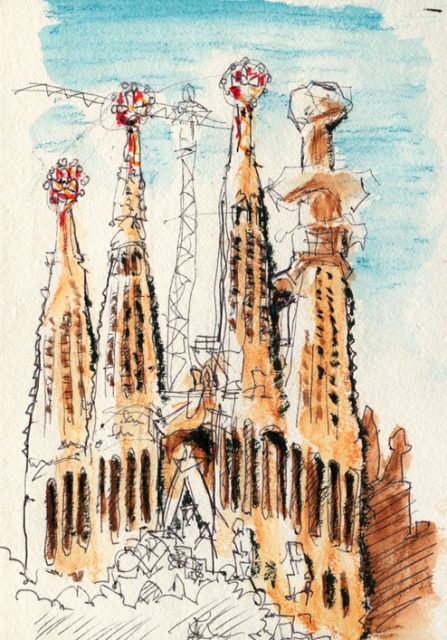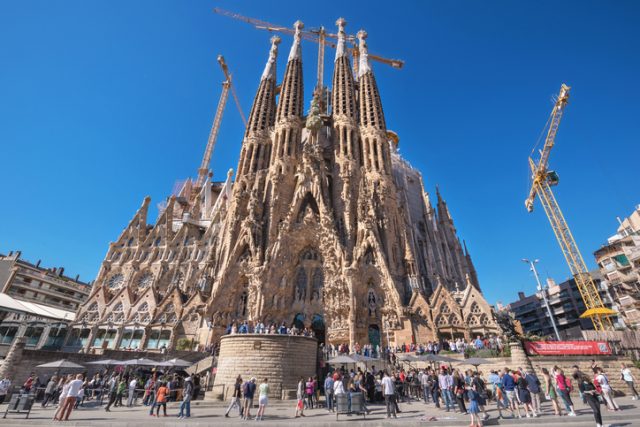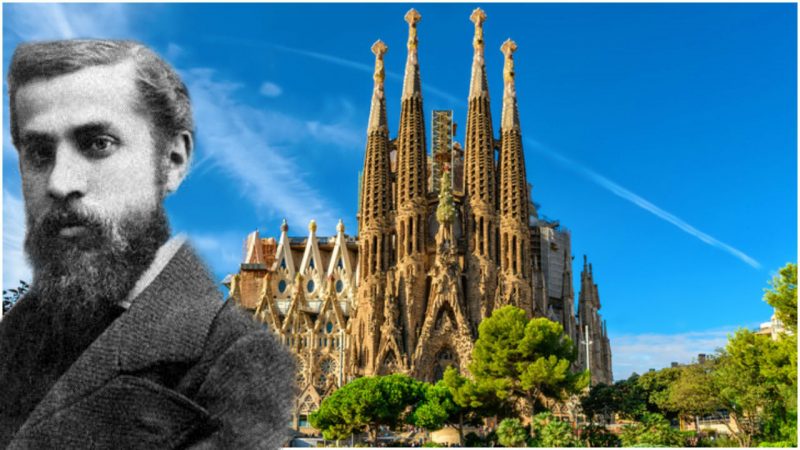Antoni Gaudí was a visionary Catalan architect who is known for his unusually organic style, permeated by psychedelic natural forms. Gaudí was the principal figure of Catalan Modernism, an artistic movement that centered on the contemplation of Catalan national identity.
He received worldwide recognition and acclaim at a fairly young age. Gaudí earned vast amounts of money for his work and was able to completely immerse himself in his passion. Architects from all over the globe still siphon inspiration from his incredibly unique works. The Sagrada Familia, his unfinished magnum opus, is considered one of the architectural marvels of the modern world.
Gaudí wasn’t the first architect to work on the Sagrada Familia. The construction of the basilica began in 1882 under Francisco Paula de Villar, a prominent Catalan architect who designed a number of churches across Spain.
However, de Villar resigned the following year and Gaudí happily took his place. He devoted the final 43 years of his life almost solely to the construction of the monumental church. As he grew old, he became more and more devoted to the Roman Catholic faith and even earned the nickname the “Architect of God.”

Several years before he tragically died, Gaudí withdrew from society and abandoned regular daily activities to concentrate only on his faith and the construction of the Sagrada. He moved into the crypt of the unfinished building, wore shabby and tattered clothing, and almost completely disregarded the basics of hygiene.
When the papal nuncio Francesco Ragonesi visited Barcelona to see the Sagrada Familia for the first time, he was stunned both by the enormous scale of the project and Gaudí’s beggar-like appearance. Gaudí’s fanatic devotion even prompted Cardinal Ragonesi to call him “the Dante of architecture.”

Sadly, Gaudí’s unkempt appearance was one of the factors that led to his demise. On June 7, 1926, the architect was walking towards the Sant Felipe Neri church for his daily prayer and confession. While walking along one of the busiest streets in Barcelona, he was hit by a number 30 tram. He lost consciousness and was left lying on the street on the spot where he fell. The passersby didn’t rush to help him because they thought he was a beggar or a vagrant and, at that time, beggars and vagrants were even more ostracized than they are today; they were rarely able to receive even minimal medical attention. Therefore, Gaudí’s condition was already irreversibly critical when a doctor who lived nearby noticed him, dragged him to a taxi, and transported him to the Santa Crue hospital.

Since Gaudí carried no money or identification, the hospital staff were convinced that he was nothing more than a homeless old man who had the misfortune to approach the tram tracks at the wrong time. They placed him in a bed and provided him with some rudimentary aid.
On the next day, the chaplain of the Sagrada Familia visited the hospital and recognized the unfortunate bearded beggar as none other than the renowned architect. However, at that point it was too late for Gaudí. The doctors immediately employed proper methods to try and save him, but he died on June 10, three days after the unfortunate accident. Two days later, an enormous crowd gathered in the crypt of the Sagrada Familia to mourn his passing.

When Gaudí died, the monumental basilica was only about 25 percent finished. The construction continued after his death but was interrupted by the Spanish Civil War in the mid-1930s. Although the Sagrada Familia is gradually becoming more complete since work resumed in the 1950s, the date of its completion is estimated to be around 2030.
Related story from us: Antoni Gaudí’s first commissioned house in Barcelona will open as a museum
Gaudí was 73 when he died, so he most likely wouldn’t have been able to complete much more of the building before dying of natural causes. Still, he would have definitely been able to implement many more of his visionary ideas into the grand design.
